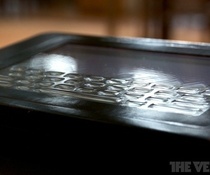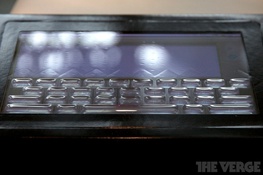
urbansheep@gmail.com
Tactus Technology unveils touchscreen prototype with appearing and disappearing keys (hands-on) | The Verge - http://www.theverge.com/2012...

|

|
6 июня 2012 в 10:49 с Bookmarklet
\/\/\/ Срамотато
Тринадцатый
alex@kapranoff.ru
mindszenty
"The technology is based on "microfluidics" — beneath the surface of a fairly ordinary-looking touchscreen are a number of channels that can be arrange in any pattern a manufacturer desires, and a small reservoir of fluid (a special type of oil that allows the channels to be invisible, for the most part). To form the shapes of the keys, a tiny amount of fluid is pumped through the channels, which raises a deformable membrane covering the surface of the touchscreen. For now, the channels need to be made in a predetermined pattern — say, an outline of a QWERTY keyboard for a tablet — but the long-term goal would be to have much finer control over a wide-ranging variety of patterns, so different apps and configurations can all take advantage of the potential for offering greater physical feedback." - × × ×
© 2015 FriendFeed (and Clio archiver)